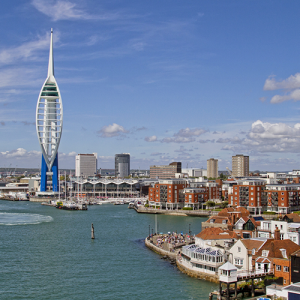
First the good news: councils are building more homes than they have in decades, with much of it of a high standard and very energy efficient. Taller tower blocks are safer than before the fire at Grenfell Tower seven years ago, with most dangerous cladding removed.
With the government looking to build 1.5 million homes in England in the next five years and prioritising social housing, the outlook is mildly encouraging.
But here the news gets worse. Housing revenue accounts, used by councils to service debt and manage homes, are near breaking point – battered by years of rising costs, right-to-buy sales and falling rental income. “Many housing revenue accounts are on the brink of collapse,” says Kieron Williams, council leader at the London borough of Southwark. “Rather than increasing supply, councils are having to refocus their limited resources on keeping existing residents safe.”
Southwark is leading calls by councils for a review of the ‘self-financing’ agreement reached in 2012. This allowed local authorities to break free from the clutches of the Treasury through abolition of the HRA subsidy system, with some councils taking on extra debt.
Nearly 13 years later, some councils have paid down part of their debt, while others took on extra borrowing. The overall picture is roughly the same, with 164 English councils that operate an HRA owing about £29bn, as in 2012.
Except, in other respects, things have changed significantly. After more than a decade of belt-tightening, it has become tricky if not impossible for some councils to service debt and provide quality homes.
The Local Government Association forecasts that councils will face total HRA deficits of more than £3bn within 10 years. Expectations have increased, along with regulatory requirements, while there have been regular changes in government policy.
Policy pressures
These include the revival of right-to-buy in 2012 and, for four years from 2016-17, a requirement on all social landlords to cut rents by 1% per annum. In 2023-24, with inflation in double figures, rent rises were capped at 7%.
Southwark estimates that changes in rent policy alone will cost it £1bn over the next 30 years. That is before you factor in the need to improve fire safety, reduce carbon emissions and ensure that residents do not face hazards such as damp and mould. “The government needs to make the self-financing model sustainable and provide more flexibility in how we use funds,” adds Williams.
The second half of 2024 saw a flurry of reports warning of the dire situation facing many local authorities:
In July, a study for the Chartered Institute of Housing by estate agents Savills suggested that the Treasury should revise the 2012 debt settlement and take on more than £17bn of the £29bn currently owed by councils.
In September, a coalition of 109 English councils led by Southwark called for major changes, including a one-off injection of £644m, a long-term green and decent homes programme, and help to revive stalled building schemes.
Prior to the October Budget, a Savills study for the Local Government Association and others found that the sum needed to maintain and improve council homes over 30 years is roughly 50% higher than forecast in 2012.
The spotlight on council landlords is greater than ever. Awaab Ishak’s death in 2020 in a mouldy flat in Rochdale led to tenants gaining more say over the quality of social housing and services. If landlords fall short, the Housing Ombudsman and Regulator of Social Housing flag up failures.
In Rotherham, the council spends 14% of rent income on servicing the £350m of debt agreed in 2012. It is proud of the way it has built or acquired 600 homes since 2018, with more in the pipeline.
They include 170 homes built on town-centre sites that private housebuilders and housing associations rejected. “It’s about acting as a first mover,” says James Clark, Rotherham’s assistant director of housing.
But Clark is acutely aware that the more that is spent on new housing (so helping to reduce homelessness), the less there is available to increase thermal comfort in older properties.
The council is due to spend £3.2m on damp and mould in 2025-26. “Tenants want us to provide a good minimum standard of housing, but they also recognise that there are unlucky people in the borough without a good landlord,” he says.

Housing standards
In Wolverhampton, hundreds of homes are being built by the council and WV Living, a council-owned company. But the council also owns 44 tower blocks, where fire safety is paramount, while 18% of all homes are non-traditional and require costly retrofitting. “People should live in safe, warm and energy-efficient properties, but there are costs associated,” says deputy leader Steve Evans.
A new decent homes standard is looming, with all social housing expected to meet energy performance certificate level C by 2030. New homes are also required to be ‘net zero ready’, for when the national grid decarbonises.
In Sheffield, the city council built six homes that already operate at net zero, some of 269 homes built during the past five years. But 19,000 households are waiting for a council home. “We can’t magic up new homes,” says Douglas Johnson, chair of Sheffield’s housing committee. “Even if we could, it would make small inroads into numbers on the waiting list.”
Across England, 123,100 households were in temporary accommodation at the end of June 2024 (including 159,380 children). Yet the LGA study, produced alongside the Association of Retained Council Housing (Arch) and the National Federation of ALMOs, found some councils needing to spend as much as £90,000 per home on routine maintenance, fire safety work and energy efficiency over the next 30 years.
The total bill over 30 years equates to about £96bn for all homes owned by English local authorities (up from £64bn when the HRA subsidy system was abolished). A further £25bn is required to meet net-zero targets by 2050.
“The situation looks fairly grim in the long term,” says Paul Price, chief executive of Arch, who believes it is unlikely that the government will ‘unpick’ the 2012 settlement. In any case, some councils are in a vastly different situation to 13 years ago, having either increased or reduced borrowing.
Better, then, for councils to continue arguing that HRA debt should not be counted as public sector net debt, the measure widely used for overall national debt. This would place the UK in a similar position to much of Europe, says Price.

However, the government has already attracted criticism for altering fiscal borrowing rules to allow more investment in public services. “I suspect the government has gone as far as it’s going to go on rule changes, although we would welcome it going further,” says John Perry, policy adviser at the Chartered Institute of Housing.
In 2018, the government lifted a borrowing cap, ostensibly to allow councils to borrow money for construction. For the past two years, councils in England have built nearly 2,500 homes for social rent – up from about 1,700 per year prior to 2018-19.
Increasing investment
Overall investment in housing by English councils reached almost £9bn in 2022-23, having hovered at below £7bn since 2017-18. “Local authorities are raising overall capital investment,” says Perry. “Quite a lot of that is going into existing stock, but some is going into new build.”
Bodies across the sector argue that 90,000 new social rented homes are needed each year. “If the government is serious about the social rented sector contribution to the 1.5 million target [for new homes to be built], that has got to be reflected in support for new build and work on existing stock,” adds Perry.
There are signs that the government is listening. Social rents can rise by the consumer price index plus 1% in April, and then again using the same formula for at least five years from 2026-27.
A return to rent convergence (meaning that tenants pay similar rents for similar sized properties) would assist some councils and is being considered by deputy prime minister Angela Rayner. But it was ruled out as too costly in a recent government consultation on rents.
Steve Partridge, head of affordable housing at Savills, says that “maybe half a dozen” local authorities are spending more through their HRAs in 2024-25 than they hold in reserve. By law, councils cannot set a budget that places their HRA in deficit.
Tighter rules
If the HRA goes into the red, the situation must be fixed the following year, possibly by switching money from the general fund. There is, therefore, relief that right-to-buy discounts were cut in November, with tighter rules expected on eligibility and resale.
An end to sales of new homes is also on the cards. Fewer than 48,000 of 124,000 homes sold through right-to-buy since 2012 were replaced by March 2024.
Adam Hug, LGA housing spokesperson and leader of Westminster City Council, says right-to-buy fails to work for local authorities in greatest need of more social housing.
But while changes on rents and right-to-buy are positive, there is a long way to go before local authorities are in the situation they envisaged 13 years ago and can meet the challenges now posed.
“Council housing is an asset,” says Hug. “Local government has taken a shellacking over the past 14 years, but the appetite and willingness to be creative is definitely there, providing we can make the finances work.”
Grenfell Tower: a catalyst for change
The fire that broke out at Grenfell Tower in west London in June 2017 had a lasting effect on housing worldwide, not just the friends and relatives of the 72 residents who died.
In the Australian state of Victoria, a government agency was set up to oversee the removal of dangerous cladding from residential tower blocks, while countries such as the United Arab Emirates made fire detectors mandatory in all homes.
In the UK, councils and housing associations moved faster than private owners to rid taller blocks of aluminium composite material cladding, which caused the fire at Grenfell to spread so rapidly. Some went further and installed sprinklers.
The government met limited costs, initially offering £400m to social landlords and then providing money for all building owners via the cladding safety scheme.
At the start of December, it announced that all buildings more than 18 metres high with unsafe cladding would be remediated by the end of 2029. Owners of buildings between 11 and 18 metres would face severe penalties if they did not at least have plans in place by this date.
An LGA study (see main article) estimates that councils in England need to spend £6.5bn on fire safety, on top of £1.2bn spent since 2017.
A National Audit Office report, published in November, says that strained finances and a high threshold for government support pose a risk to work on social rented housing. More money was promised in October’s Budget.
In Wolverhampton, the council is spending £54m on sprinklers and other fire-safety measures in its 44 high-rise blocks. “We want to give residents reassurance,” says deputy leader Steve Evans. “If you live in a high-rise block and saw what happened at Grenfell, you’d be extremely worried.”
Westminster City Council has spent £16m on fire safety over the past two years, and expects to spend a further £19m by 2025-26. It has not received any grants from the Greater London Authority for cladding removal since 2021-22.
Though vital, fire safety is costing considerable money, says council leader Adam Hug. Skill shortages create a further problem. “One of the real challenges is finding the right people to do the work,” he adds.



















